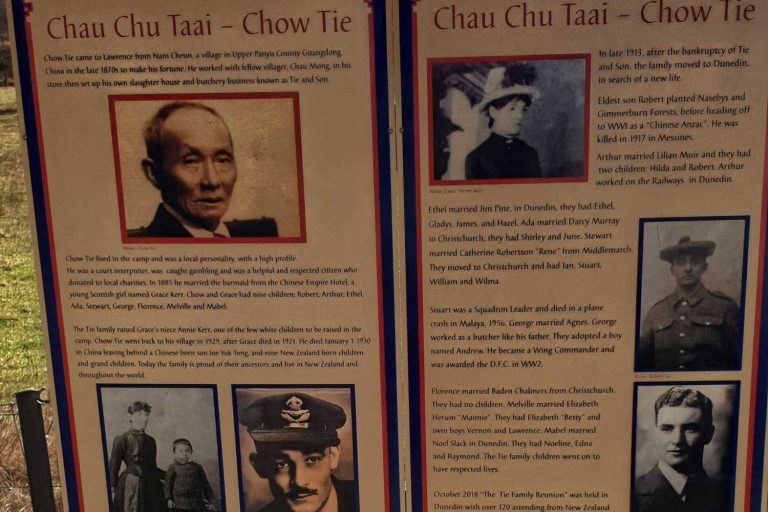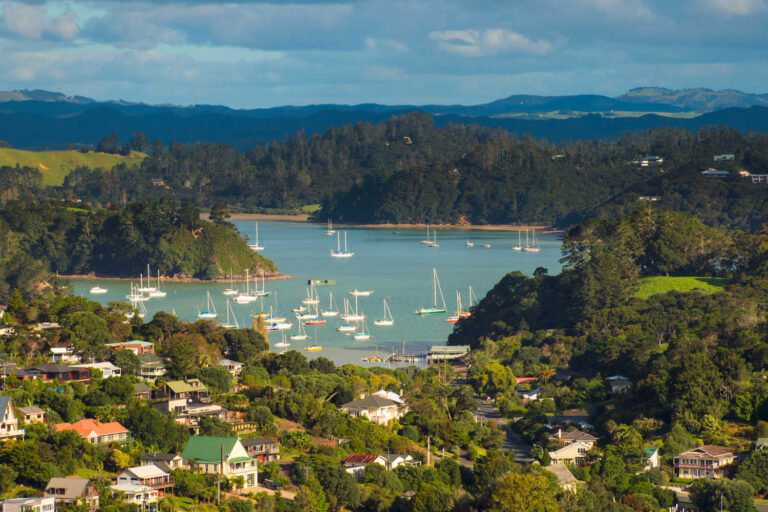What to see and where to go
Lawrence there are plenty of things to do. The centre of the universe for gold mining fever in the mid-nineteenth century is now a backwater town with a wealth of history to explore, beautiful rolling hills and a chance to relax, revive and find the slow lane.

WHAT TO DO IN LAWRENCE, HIGHLIGHTS
- Tuapeka Lawrence Museum with its dredging equipment, stamping machinery, a plethora of contraptions from early bikes to sewing machines is rabbit warren in a former mining office. There are discoveries to be made in every hallway. The museum is definitely old fashioned yet intriguing and definitely, a must-go destination for heritage buffs
- Walks around town, finding plaques describing the heyday of Lawrence and the buildings left behind
- Weatherston’s Daffodil open days (September) with flowers carpeting 25 acres. A perfect picnic spot for day-trippers from Dunedin.


- Munro Gully walking trail explore beech forests and observe mining relics from water races to historic dams
- Chinese mining precinct with its heritage buildings, Joss House, and evocative setting

A local school teacher, John Joseph Woods composed the music for New Zealand’s national anthem in 1876. Woods won a competition to set “God Defend New Zealand”, a poem by Thomas Bracken, to music. He is buried in the town’s Victorian hilltop cemetery.
WHAT TO DO NEARBY LAWRENCE
- Visit Tuapeka and cross the river on a punt. Check What’s so great about Tuapeka for details
- Explore inland Otago following gold mining trails. For inspiration read more … Inland Otago Road Trip
- Clutha Gold Cycle & Walking trail starts and finishes in Lawrence. The trail is considered a Great Ride and is a 73 km easy grade trail.
- Bellview Wetlands, a few minutes from the main street is a scenic walking track surrounded by native bush and birds. Check the travel pack section for information on the wetlands and their origin.


LAWRENCE’S FAME
- Gabriel Read, an Australian prospector, and adventurer found gold near the Tuapeka River (Clutha River tributary). Working with a pan, horsehair brush, and butcher’s knife he collected 7 ounces of gold in a day. The gold rush was on.
WHERE TO TAKE THE BEST SELFIE IN LAWRENCE
- Gabriels Gully Historic Reserve
- Yourself gold panning at Weatherstone’s (approximately one hour walk from Gabriels Gully Reserve)
- Victorian cemetery with the elaborate headstones, Celtic crosses, and ironwork create an atmospheric backdrop


WHAT TO DO WITH THE KIDS IN LAWRENCE
- Tuapeka Museum is an explorer delight for kids with corners and odd-looking nineteenth century household equipment
- Gabriels Gully interpretative plaques, kids can think about how miners moved mountains, the original gully floor was 50 m below today’s level
FESTIVALS IN LAWRENCE
- Daffodils at Weatherstone Brewery ruins September open to the public. For more information Weatherstons Brewery and Daffodils Trust
- Art and Craft events – January


LAWRENCE’S SOCIAL MEDIA
WHO TURNED UP AND NAMED LAWRENCE?
- Wrapped in the rolling hills of Tuapeka Lawrence was defined by the gleam of gold (1861) in nearby Gabriel’s Gully. The gold rush brought 11,000 prospectors into the area. Within months the transient population of 11,000 briefly surpassed Dunedin. As with many towns in colonial New Zealand, the name Lawerence honors Sir Henry Lawrence, hero of the Indian, Lucknow military campaign of 1857.
Getting to Lawrence
TRAVEL PACK INFORMATION
Gabriels Gully interpretation walk – Department of Conservation.
From the car park follow the track up the hill to traverse a fault scarp (an exposed fault line unearthed by mining in the gully) and follow several water races uphill. You will pass the site of a raceman’s cottage, Pollands Dam, and a rusty sluice pipe.
Water was piped in from as far afield as Waipori and stored in the many dams in the area to rush through the water races and sluice pipes operated by the racemen to blast the rock faces for gold.
The track then descends the face providing views across the gully, to the elevator pond, and beyond to the tent sites of hundreds of miners during the rush and later of the mine office.
You will then enter the regenerated manuka forest and wander amongst remnant stacks of conglomerate (gold-bearing) rock before crossing an open paddock to an intersection.
From here you can turn right to visit the remains of the North of Ireland stamper battery or turn left to visit another dam and walk through the forest to the Great Extended Mine shaft.
After seeing the mine shaft wander back to the carpark through a gully and past the mines rusty safe which still remains on site. The gully has visible remains of claim intersection stacks, the piles of conglomerate each miner left to ensure they did not upset their neighbour.
Greys Dam picnic area
Drive or ride past the turn off to Gabriels Gully carpark to reach Greys Dam. The still water of the dam reflects the vibrant colour of the surrounding vegetation, providing a great backdrop for picnics on one of the picnic tables or games of backyard cricket in the picnic area.
This calm seemingly gentle dam once provided hydraulic pressure to shift entire hillsides.
Otago Dam Track begins at Grays Dam but is closed as the historic dam has storm damage.
BEST BITS TRAVEL GUIDE





























